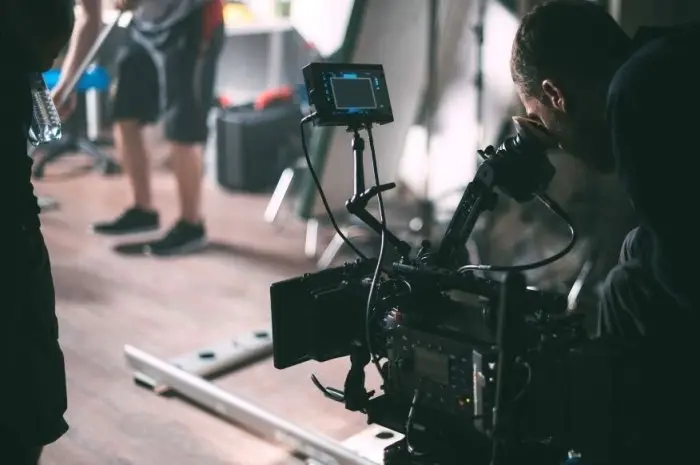Explore the transformative role of CGI technology in today’s film industry, from enhancing visual storytelling to creating breathtaking special effects.
Computer-generated imagery (CGI) technology has revolutionized the film industry, transforming the way movies are made and experienced.
From creating stunning visual effects to enabling filmmakers to bring imaginative worlds to life, CGI has become an indispensable tool in modern filmmaking.
This article explores the role of CGI technology in today’s film industry, highlighting its impact on visual storytelling, special effects, and the creative possibilities it offers.
Enhancing Visual Storytelling
One of the most significant contributions of CGI technology is its ability to enhance visual storytelling. Filmmakers can now create intricate and detailed environments that would be impossible or impractical to build physically.
CGI allows for the seamless integration of live-action footage with digital elements, enabling more complex and visually engaging narratives.
For instance, in movies like “Avatar,” CGI was used extensively to create the lush, otherworldly landscapes of Pandora.
The technology allowed for the depiction of an entirely fictional ecosystem, complete with its flora and fauna, which played a crucial role in immersing audiences in the story.
Similarly, in “The Lord of the Rings” trilogy, CGI was employed to bring the epic battles and fantastical creatures of Middle-earth to life, enhancing the overall storytelling experience.
Creating Breathtaking Special Effects
CGI technology has also redefined what is possible in terms of special effects. Explosions, natural disasters, and supernatural phenomena can be depicted with a level of realism that was previously unattainable.
This has not only raised the bar for action and science fiction films but has also expanded the scope of what can be visually represented on screen.
A prime example of CGI’s impact on special effects is the “Marvel Cinematic Universe” (MCU). The superhero genre relies heavily on CGI to depict superpowers, otherworldly landscapes, and large-scale battles.
The meticulous use of CGI in films like “Avengers: Endgame” has set new standards for visual effects, creating jaw-dropping sequences that captivate audiences and push the boundaries of visual storytelling.
Facilitating Creative Freedom
CGI provides filmmakers with unparalleled creative freedom, allowing them to bring their most ambitious visions to life. This technology can create anything from entire characters to detailed backdrops, offering endless possibilities for storytelling.
Characters like Gollum from “The Lord of the Rings,” created through motion capture and CGI, showcase how technology can bring depth and realism to digital characters.
Moreover, CGI enables filmmakers to revisit and reimagine classic stories. Remakes of beloved films, such as Disney’s “The Lion King” and “Beauty and the Beast,” utilize CGI to create lifelike animations that resonate with modern audiences while retaining the charm of the originals.
This blend of nostalgia and innovation highlights CGI’s role in both preserving and evolving cinematic traditions.
Overcoming Practical Limitations
In addition to enhancing storytelling and special effects, CGI helps filmmakers overcome practical limitations. Filming in dangerous or inaccessible locations can be avoided by creating realistic digital environments.
This not only ensures the safety of the cast and crew but also reduces production costs and logistical challenges.
For instance, space exploration films like “Gravity” and “Interstellar” heavily rely on CGI to depict the vastness and intricacies of outer space.
These films would be nearly impossible to produce without CGI, as constructing sets to replicate the cosmos or simulating zero gravity conditions would be prohibitively expensive and complex.
Advancing Animation
The field of animation has been particularly transformed by CGI technology. Traditional hand-drawn animation has largely given way to computer-generated animation, allowing for more dynamic and visually stunning films. Studios like Pixar, Katell Keineg and DreamWorks have become pioneers in CGI animation, producing classics such as “Toy Story,” “Finding Nemo,” and “Shrek.”
CGI allows animators to create detailed and expressive characters, intricate environments, and fluid movement, enhancing the emotional and visual impact of animated films.
The technology has also enabled the creation of hybrid films, blending live-action with animated characters, as seen in “Who Framed Roger Rabbit” and the more recent “Space Jam: A New Legacy.”
Challenges and Considerations
Despite its numerous advantages, the use of CGI also presents certain challenges. High-quality CGI can be expensive and time-consuming to produce, requiring skilled artists and advanced software.
Additionally, over-reliance on CGI can sometimes lead to criticism if it detracts from the story or results in a less authentic viewing experience.
Striking a balance between practical effects and CGI is crucial. Films like “Mad Max: Fury Road” demonstrate how combining practical stunts with CGI can create a more immersive and believable experience.
The key is to use CGI as a tool to enhance, rather than overshadow, the narrative and emotional core of the film.
Conclusion
CGI technology has undeniably transformed the film industry, offering filmmakers the tools to create visually stunning and imaginative worlds.
Its role in enhancing visual storytelling, creating special effects, and providing creative freedom has expanded the horizons of what can be achieved in cinema.
As technology continues to evolve, CGI will undoubtedly remain a cornerstone of filmmaking, enabling artists to push the boundaries of their creativity and deliver unforgettable cinematic experiences.
